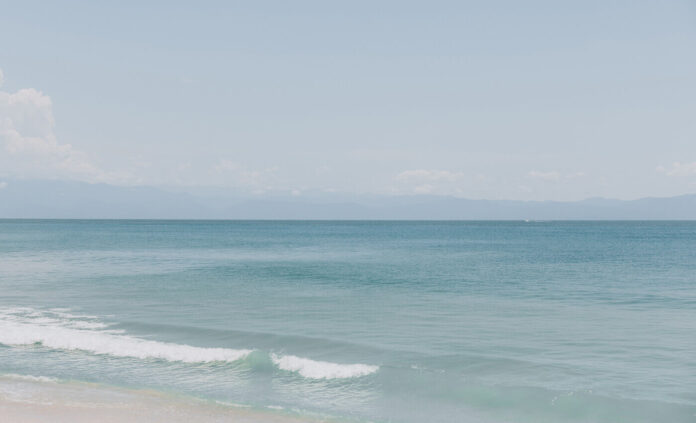The Alpe Adria Cycle Path (Ciclovia Alpe Adria Radweg, hence the acronym CAAR), a cross-border long-distance cycle route linking Salzburg, on the northern side of the Alps, to Grado, a well-known Italian tourist and thermal center, overlooking the Adriatic Sea.

The path, by integrating old railway tracks and numerous tunnels, makes the Alpine crossing a pleasure tour on two wheels – with culture, sport, and cuisine.
Crossing the Alps by bike is a dream for many cyclists. And thanks to the perfectly prepared Alpe Adria bike path, you don’t even have to be a top athlete to master this tour. In just one week, it takes you from Mozart’s hometown Salzburg in Austria to the Italian Mediterranean Coast.
Due to the many inquiries, we have received about a tour that would be suitable for road bikes, a route has been designed that bypasses all the unpaved sections of the Alps-Adriatic Bike Tour. In those cases, riders simply have to switch to the nearest (main) road, though this only affects around 20 percent of the entire tour. 80% of the road-bike variant still follows the original route of the Alps-Adriatic Bike Tour! The link for a map of this route
Make your way from the Gastein Valley to Böckstein, where a train takes you to Mallnitz on the other side of the Gamskarlspitze mountain range in just 11 minutes. Out in the open again, the bike path is winding through the Austrian county of Carinthia.
Once in Italy, you will pass Tarvis, Gemona, Undine, and Aquileia on your way to Grado on the Adriatic shore. Idyllic spots, beautiful tourist sights and impressive landscapes will accompany you on your trip to the South. One thing is for certain: every cyclist deserves a delicious gelato at the end of their trip, as well as a refreshing jump into the Adriatic Sea.
Eight cycling stages connect the city of Mozart to the Adriatic Sea. The Alpe Adria cycle path, by integrating old railway tracks and numerous tunnels, makes the Alpine crossing a pleasure tour on two wheels – with culture, sport and cuisine.
This itinerary is considered one of the most heterogeneous and scenographic cycling routes in Europe and offers continuous surprises for cyclists. You will cycle through pleasant towns, medieval villages and characteristic villages, riding along the banks of placid rivers and foaming streams that sometimes disappear into wild ravines.
Alpine landscapes, peaceful villages and a host of sights will accompany you on your journey, while more than 20 tunnels will assist you on your journey, making an Alpine crossing an undertaking that requires a more manageable amount of energy.
The Alpe Adria Radweg cycle route has won awards “Best Cycle of the Year 2015” during the active tourism fair in Amsterdam and the “Oscar of Cycle tourism” at the Cosmobike in Verona in 2016.
From the suggestive alpine valleys, rich in woods and dominated by high mountains, we descend towards the fertile Friuli plain and the sunny Mediterranean beaches. While cycling along this path you will surely be fascinated by the continuous succession of natural wonders, historical monuments, rich popular culture and typical dishes of the regions crossed.
There is therefore no wonder that the number of cyclists who choose this track for their cycling holidays is increasing year after year!
You do not have to worry about transport from Grado back home to Carinthia and Salzburg. The Alpe Adria bike path runs almost continuously along the railway line. If required, various sections can be covered by train at any time. The “Micotra train” connects the cities of Udine and Villach with its own bike carriage, offering a special service for every cyclist.
The Alpe Adria Cycle Trail is not only a perfect example of the good cooperation between the three states of Salzburg, Carinthia and Friuli–Venezia Giulia. It is also a practical example of how to get to know the culture and cuisine of three states within just a few days: today you can start with Salzburger Nockerl dessert, then enjoy the cuisine of the Carinthian Alps and Adriatic on the next day, followed by Italian delicacies in a trattoria in Tarvis, Udine or Grado.
Stages:
STAGE 1: Salzburg-Bischofshofen 53 km
The first stage begins in the middle of the magical Old City of Salzburg City of Mozart, leading you on a leisurely ride southwards next to the River Salzach, and into the mountains of Salzburg’s Limestone Alps, past numerous natural monuments, high rock faces and impressive gorges.
We begin our stage on Mozartplatz square, in the heart of Salzburg’s beautiful Old City. The entire route of this stage is alongside the River Salzach.
We come to the old Celtic city of Hallein, and can also enjoy the refreshing waters of Golling Waterfall and beautiful Bluntautal valley. After a short climb, we cycle past the Salzachöfen, the point where the Salzach slices impressively through the rocks of the
Tennengebirge massif. Then we enter a narrow canyon leading to Hohenwerfen Castle, a picturesquely situated, medieval castle between the mountains of the Tennen- and Hagengebirge. Now the valley broadens and we reach Bischofshofen, the end of this first stage. Along the way are numerous natural monuments and sights, inviting us to pay them a visit and enjoy a well-earned refreshment break.
STAGE 2: Bischofshofen – Bad Gastein 52 km
The second stage takes us initially alongside the reservoirs on the middle Salzach to Schwarzach, then tackles a climb before entering the Gastein Valley. A bike path leads us from the entrance to the valley to Bad Gastein, a magnificent location with Gastein Waterfall in the center of town.
Our constant companions are the mountains of the Salzburg Alps. In Gastein Valley, views of the glaciated peaks of the Hohe Tauern mountains reveal themselves before our eyes.
From Bischofshofen to Schwarzach, we continue to enjoy a leisurely bike ride alongside the Salzach, which, at this point, is mostly regulated by dams. Along the way, we pass the county seat of St. Johann im Pongau – a detour to the might, neo-Gothic “Pongau Cathedral”, standing in the middle of the Oberer Markt, is always rewarding.
Between Schwarzach and the village of Klammstein at the entrance to Gastein Valley, we have to tackle a vertical gain of 200 meters. Since we also have to ride through a 1.5 km-long tunnel at the start of Gastein Valley, we can also take the train or a bike taxi for this section.
With no climbs worthy of note, our continued bike ride through the valley is truly enjoyable, bringing us first to Dorfgastein, then on to the heart of the famous spa town, Bad Hofgastein. From here, we keep to the banks of the Gasteiner Ache to Bad Bruck. The imposing backdrop of the world-famous spa town which surrounds the Gastein Waterfall comes closer and closer into view. The last few meters in Bad Gastein are then steeply uphill.
STAGE 3: Bad Gastein – Mallnitz-Spittal an der Drau 59 km
This stage begins in Gastein Valley or Mallnitz (depending on when you prefer to use the Tauernschleuse motorail service).
After the Tauernschleuse, we find ourselves in Carinthia, one of Austria’s most important tourism regions, located on the southern side of the Alps. On this stage, the Alpe-Adria Bike Tour generally takes us through the Lower Mölltal valley, nestled amidst some 3,000-meter tall mountains of the Reisseck Group to the north and the Kreuzeck Group to the south of the valley.
Outstanding sightseeing attractions and rewarding stopping-off points include the town center of Obervellach, Falkenstein Castle, Bernitz Waterfall, the Kreuzeck lift, Barbarossa Canyon, a rest area on the shores of the Möllstausee in Mühldorf, and the Teurinia Roman Museum outside Spittal. In the county seat of Spittal itself, we find the beautiful Renaissance Schloss Porcia, the Museum of Folk Culture, and the always-popular town park.
STAGE 4: Spittal an der Drau – Villach 39 km
At this stage, you will ride around 40 kilometers. Lots of small highlights await history buffs and nature lovers, such as the excavations of an early Christian church outside Molzbichl in the lower Drautal valley, the “Carantana” museum and Villach’s most popular mountain, the Dobratsch, located in a nature park of the same name.
Hot springs in Villach guarantee that even those with flagging spirits will quickly feel rejuvenated. In the summer 2012, Carinthia’s new Therme Warmbad-Villach will be opened, Austria’s most modern spa & aquatic experience. From Spittal, the Alpe-Adria Bike Tour takes us along the Drau Bike Path, which is well-developed and clearly marked. For most of this stage, our route keeps right on the banks of the river.
STAGE 5: Villach – Tarvisio 37 km
This stage takes us mainly alongside the Gail, on the southern side of the Villacher Alpe, and in parts also through Dobratsch Nature Park. Pedaling through small villages, we gradually approach the Italian border, which we cross at Thörl-Maglern.
Following an abandoned railway line, just a few kilometers beyond the border and we come to Tarvisio, our northern starting point for the Val Canale.
STAGE 6: Tarvisio – Venzone 61 km
To Dogna the cycling route is well equipped with signs and runs mainly on the bike path that was built on the former disused railway Pontebbana. Currently, the cycle route is passable all the way to Dogna
After Dogna, the experienced cyclist moves towards the South, along the path that runs on National Road n.13. They will follow it till Chiusaforte and then until Resiutta.
At Resiutta the experienced cyclist will again use National Road No 13 and go on the bridge of Moggio Udinese. The town of Moggio is reached by crossing this bridge over the river Fella.
The experienced cyclist can use local roads and stretches of national and provincial roads to reach the mentioned places. Give you full attention to the stretches of the path that are shared with cars and at the main road crossings.
STAGE 7: Venzone – Udine 55 km
The experienced cyclist can use local roads and stretches of national and provincial roads to reach the mentioned places. Give full attention to stretches in promiscuity with the cars and at the point of crossing the main roads. Pay close attention to the stretches of road with close proximity to cars and at the main road crossings.
The cycling route, called “Ippovia of Cormor Valley”, is not paved with asphalt but is equipped with signs and runs along the Cormor river from Buja to the Parco del Cormor (Cormor Park) at the west of Udine.
For crossing the city of Udine experienced cyclists will use part of the ordinary urban roads, and part of the existing cycling road.
STAGE 8: Udine – Grado 59 km
For crossing the city of Udine experienced cyclists will use part of the ordinary urban roads, and part of the existing cycling road. The experienced cyclist to reach the places mentioned, you can use for the greater part of the local road network. Give full attention to whether paths in promiscuity with the cars and at the point of crossing the main road.
The cycling route which is equipped with signs that run partly on a bike path and partly on local roads; starts from the “Porta di Aquileia (Aquileia door)” of Palmanova and ends near the cross with the National Road No 14, at the entrance of Cervignano.
For crossing of Cervignano town, the experienced cyclist can use ordinary urban roads. The cycling route which is equipped with signs that run mostly on the bike is built on the former disused railway Cervignano-Grado.
To reach the center of Grado, the cyclist will follow a short stretch of Regional Road No. 352, paying the utmost attention to motorized traffic transiting.





